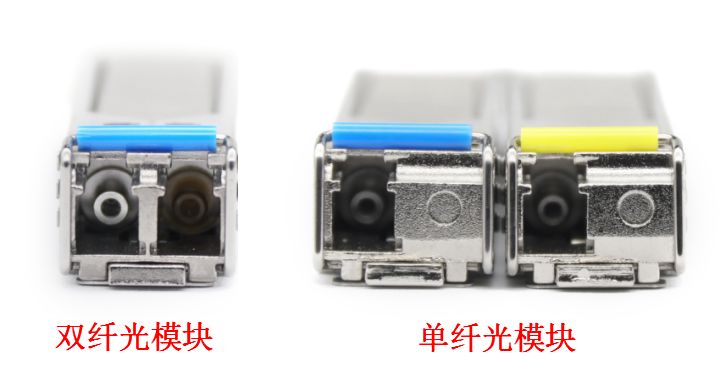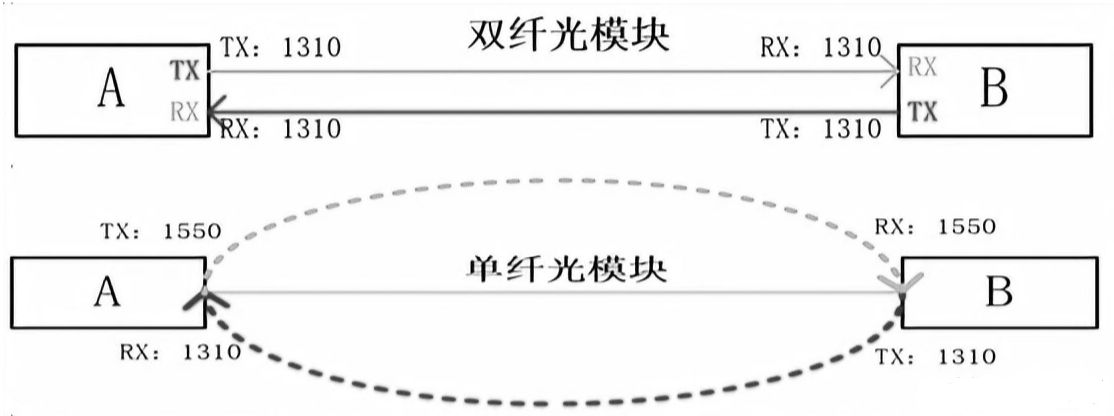Difference between dual fiber optical module and single fiber optical module
1. Different appearance:
Double fiber optical module: There are two optical fiber sockets, respectively, the sending (TX) and receiving (RX) optical ports. Two optical fibers need to be inserted, and different optical ports and optical fibers are used for data transmission and reception; When dual fiber optical modules are used, the wavelengths of optical modules at both ends should be consistent.
Single fiber optical module: there is only one optical fiber socket, which is shared by sending and receiving. One optical fiber needs to be inserted, and the same optical port and optical fiber transmission are used for data receiving and sending; When using a single fiber optical module, the wavelengths of the optical modules at both ends should match, that is, the TX/RX is opposite.
2. Different conventional wavelengths: single fiber module has two different wavelengths for sending and receiving, while dual fiber module has only one wavelength;
Conventional wavelength of double fiber: 850nm 1310nm 1550nm
Conventional wavelengths of single fiber mainly include the following:
Gigabit single fiber:
TX1310/RX1550nm
TX1550/RX1310nm
TX1490/RX1550nm
TX1550/RX1490nm
TX1310nm/Rx1490nm
TX1490nm/Rx1310nm
10 Gigabit single fiber:
TX1270nm/RX1330nm
TX1330nm/RX1270nm
TX1490nm/RX1550nm
TX1550nm/RX1490nm
3. Different speeds: compared with the dual fiber optical module, the single fiber optical module has a wide range of applications in 100 megabit, gigabit and 10 gigabit speeds; It is rare in 40G and 100G high-speed transmission.

